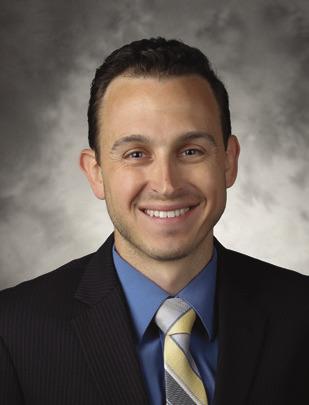'Being more rural is also a very important aspect as far as access to care.'
Healthcare professionals have designated February as American Heart Month, placing emphasis on cardiovascular health.
Dr. Justin Coyle of Baylor Scott and White Hospital – Marble Falls is taking part in a four-part series, in the Tuesday issues of The Highlander this month.
He shared insights and offered recommendations on various heart-related topics to focus on heart health.
Q: What are the risk factors and how prevalent is heart disease in a rural area?
A: "Definitely, the more birthdays you have the higher the risk for anything, and cardiovascular disease is certainly no different. Age is an important risk factor that plays into our risk assessment for someone’s health.
“Being more rural is also a very important aspect as far as access to care. People that live two hours from the nearest medical center are going to be much more likely to say, ‘Well, it’s an awful long drive for me to
— Dr. Justin Coyle Baylor S&W – Marble Falls get checked out for this little thing that I’m having. I’ll just put it on the back burner.’ … Age and access to care, especially in more rural settings, definitely plays a role in people’s health.”
Q: What should one watch for in terms of potential cardiovascular problems?
A: “We make a big deal about the difference between exertional versus non-exertional symptoms. The key being typically exertional symptoms become more concerning for something to do with the cardiovascular system because you’re increasing the demand on your cardiovascular system with exertion. If the heart isn’t able to meet those higher demands, that supply and demand mismatch is what stands out and manifests in terms of symptoms.
“Another key distinction in terms of situations are positions. There are certain issues with the heart, when laying down, symptoms might be worse compared to sitting up, namely chest pains or shortness of breath which could be indicative of heart failure or pericardia.
“Awareness for the patient is key whether it’s day versus night, laying down versus sitting up, exertion versus non-exertion.”
Q: What advice do you give to patients on how to improve their heart health?
A: “It all starts with lifestyle for sure. A lot of people come to doctor’s offices expecting to get prescriptions. Prescriptions are an important part of what we do and how we can help curb someone’s risk, but a large emphasis needs to remain on lifestyle; getting a healthy, balanced diet.
“There are different guidelines for these things like the AHA (American Heart Association) recommends getting 150 minutes of intermediate types of exercises per week such as a fast walk or 75 minutes (per week) of vigorous activities like lifting weights or playing tennis. You can break it up however you might deem fit for the individual.
“Avoiding certain substances that we all know are poor for your health in any amount, particularly tobacco products. Alcohol is one of those things that in moderation, it’s good; in excess, it’s not so good.
“The guidelines or recommendations have remained unchanged for quite a while: that is two drinks for men, one drink for women per day as being the healthy limit.”
Find the next installment of the series on heart health in the Tuesday, Feb. 21 issue of The Highlander.


